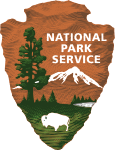DAR Constitution Hall

DAR Constitution Hall is a concert hall located at 1776 D Street NW, near the White House in Washington, D.C. It was built in 1929 by the Daughters of the American Revolution to house its annual convention when membership delegations outgrew Memorial Continental Hall. Later, the two buildings were connected by a third structure housing the DAR Museum, administrative offices, and genealogical library. DAR Constitution Hall is still owned and operated by the National Society of Daughters of the American Revolution. It was designated a National Historic Landmark in 1985. It has been a major cultural center of the city since its construction, and houses its largest auditorium.
Excerpt from the Wikipedia article DAR Constitution Hall (License: CC BY-SA 3.0, Authors, Images).DAR Constitution Hall
18th Street Northwest, Washington
Geographical coordinates (GPS) Address Nearby Places Show on map
Geographical coordinates (GPS)
| Latitude | Longitude |
|---|---|
| N 38.893055555556 ° | E -77.041666666667 ° |
Address
Art Museum of the Americas
18th Street Northwest 201
20240 Washington
District of Columbia, United States
Open on Google Maps









